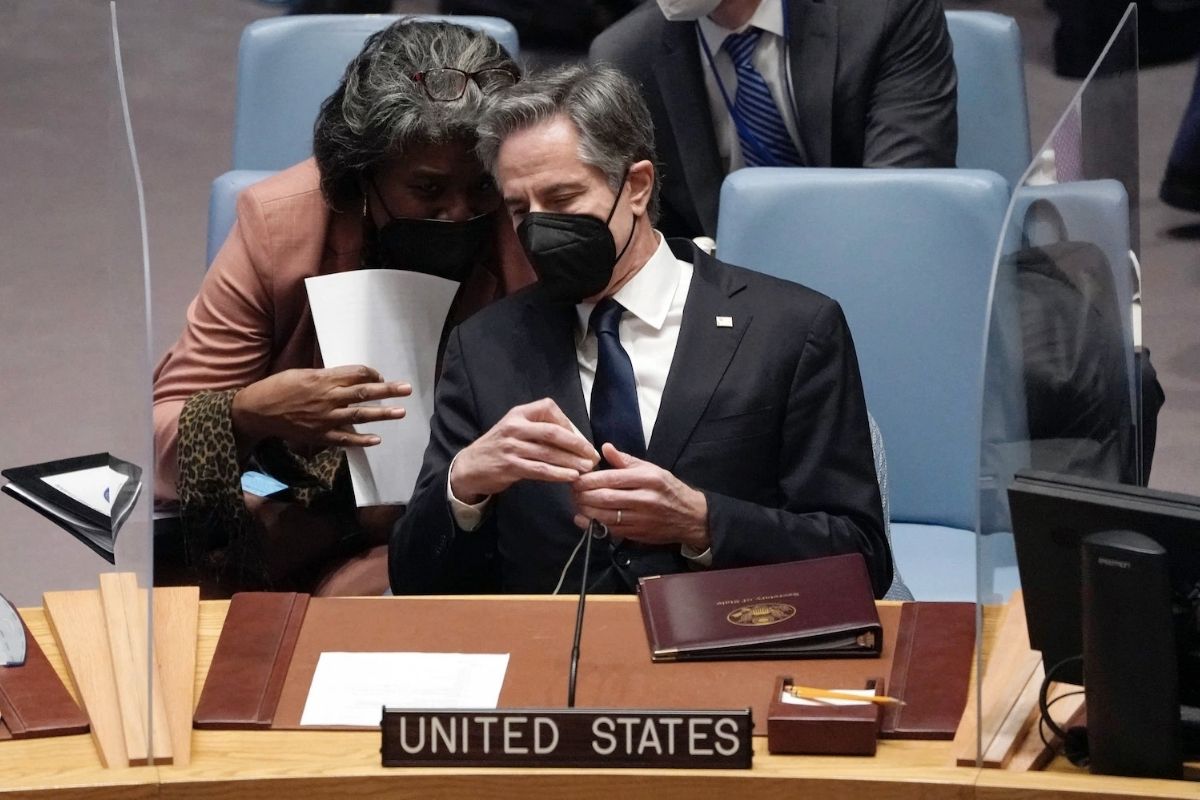According to two sources familiar with the discussions, the Biden administration has been working to establish a communication backchannel with the Russian military in order to avoid an unintentional clash between US and Russian forces along the Ukrainian border as Moscow mounts a sweeping attack across the country.
According to the sources, such an agreement would allow authorities from both nations to share intelligence to guarantee that Russian soldiers invading Ukraine do not cross paths with US forces operating nearby in Eastern Europe, such as along the Polish border and the Black Sea. Even yet, they added, while the administration has a variety of possibilities for a “deconfliction channel” with Russia, none of them totally eliminates the risk to US soldiers in the region.
According to the sources, some US officials were hesitant to open up the communication line before Russia started its war on Ukraine this week, thinking it would be interpreted as implicit acceptance of Moscow’s invasion.
According to the sources, the channel would focus on preventing erroneous missile attacks and ensuring that Russian and American planes and warships operate in different zones.
According to the sources, the communication channel could be used by top US military officer Gen. Mark Milley, chairman of the Joint Chiefs of Staff, and his Russian counterpart, Chief of Russian General Staff Gen. Valery Gerasimov, as well as the NATO supreme allied commander, US Gen. Tod Wolters, and another top Russian officer.
According to one person with knowledge, Pentagon officials recently explored prospective communication lines with top White House officials.
However, it is uncertain whether Russia would agree to the plan.
NATO Secretary-General Jens Stoltenberg told NBC News in Brussels on Friday that deconfliction with Russia’s military is a major worry for him, and that he has spoken with NATO’s supreme allied commander about securing deconfliction channels, especially in the Black Sea.
In the Syrian war, where both US and Russian forces have fought, military leaders from both countries established up a communication channel in 2015 to avoid accidents or unintentional targeting of the other side’s forces. The conduit was soon established when Russia launched military action in Syria.
The deal finally included a 24-hour hotline and frequent meetings between US and Russian personnel in charge of combat planes. Several incidences in Syria, despite deconfliction rules, threatened to spark a crisis between the two giants.
Turkey, a NATO member, shot down a Russian Su-24 fighter plane on the Turkish-Syrian border in November 2015. The downing of the Russian bomber sparked worries that Moscow might react by shooting down more NATO planes.
Read More:
- The Percentage Of Black People Who Own A Home Is Currently Smaller Than It Was A Decade Ago
- Experts Worry That The Consequences Of Global Sanctions On Russia Will Not Be Felt Quickly Enough To Punish Putin
- Russia’s Invasion On Ukraine Will Hurt The Us Economy By Raising Gas Prices, Inflation, And Lowering Confidence
In 2018, a tiny outpost in eastern Syria was attacked by hundreds of Russian mercenaries fighting for the Assad government. The Russian government claimed it had no control over the mercenaries, while the United States said it had repelled the onslaught and suffered substantial losses without losing any soldiers.
“The danger is extremely real,” said Ben Hodges, a former United States lieutenant general who led the US Army in Europe from 2014 to 2017.
Even well-trained troops and pilots may make mistakes in the “fog and friction of battle,” according to Hodges, who is currently the Pershing chair in strategic studies at the Center for European Policy Analysis think tank.
NATO planes in Eastern Europe and warships in the Black Sea, according to Hodges, were likely given strong orders to give Russian forces “a wide berth.”
Because of Russia’s invasion of Ukraine and the United States and NATO’s growing presence in Eastern Europe, the two militaries are now operating in close proximity. There are lots of potential for disasters, according to Hodges and other experts, from cyber assaults spilling over the border to navigation blunders, botched missile strikes, or crashes in the air or in the Black Sea.
“The chance of a miscalculation or a military accident is not inconsequential,” said James Stavridis, a retired four-star admiral and former NATO supreme allied commander. “The Pentagon should be working to deconflict with Russia,” said Stavridis, now an NBC News national security contributor.
Even before Russia’s invasion of Ukraine, the Pentagon had documented several instances of Russian jets and ships engaging in “risky and reckless” behavior. Three US Navy P-8 surveillance planes operating in international airspace over the Mediterranean had close calls with Russian jets on Feb. 16, which the Navy described as “unprofessional.”

